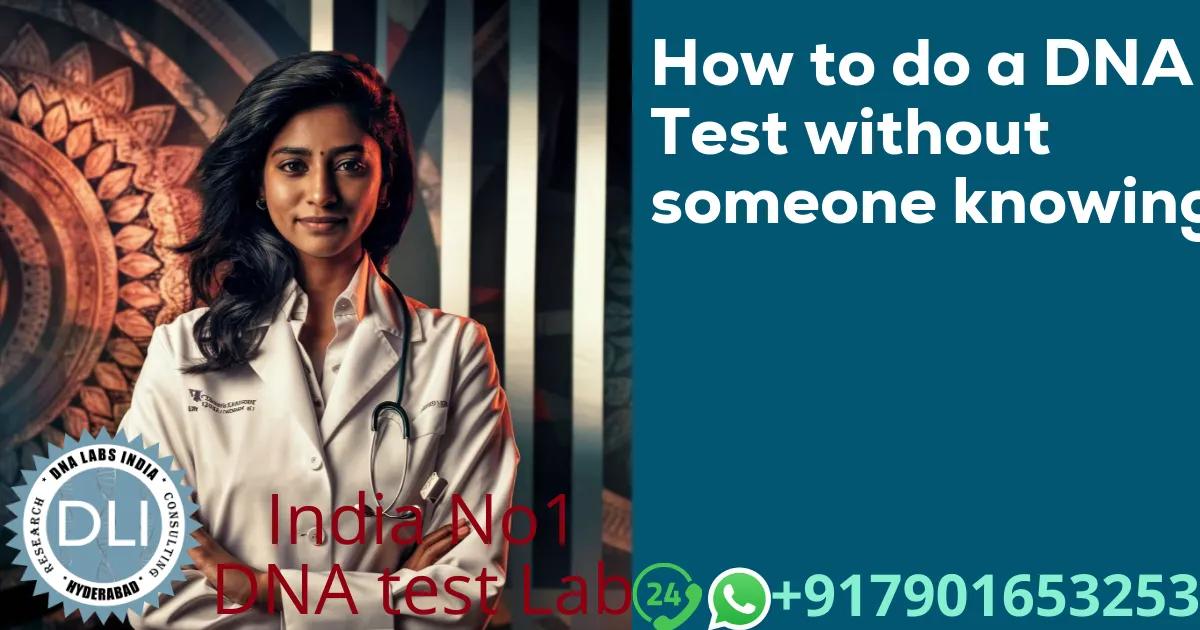How to do a DNA Test without someone knowing
DNA testing involves collecting a sample of a person’s DNA, which can be done through a variety of methods, including a cheek swab, a hair sample, or a blood sample. Collecting a DNA sample without someone’s knowledge or consent would violate their rights to privacy and autonomy and could cause harm and distress if the results of the test were revealed to them without their consent.
If you are interested in obtaining DNA testing for yourself or for a family member, it is important to approach the situation with sensitivity and respect for the person’s autonomy. It is a good idea to have an open and honest conversation with the person about your reasons for wanting the test and to seek their consent before proceeding. If the person is unwilling to undergo DNA testing, it is important to respect their decision and to consider other ways to address your concerns or questions.
What is a DNA test?
Human genes contain a huge amount of information. From a DNA test, you can find out, for example, what ethnic groups your ancestors belonged to, whether you have genetic diseases, whether you are prone to playing football, how you tolerate lactose, and whether aspirin works effectively in your case. The most famous practical application of the genetic test is the establishment of paternity. But this article is not about that.
DNA testing goes like this. The client submits his biomaterial to the laboratory: as a rule, saliva or cells from the inner surface of the cheek. DNA sections are isolated from the material and snips are decoded. The word “snip” is derived from the English abbreviation SNP – single-nucleotide polymorphism. It means differences in nucleotide sequences. These differences arise due to point mutations during evolution. Then the snips are compared with others already in the database – and thus receive information about the ethnic origin of the client, predisposition to diseases, personal characteristics and reactions to medications.
As a result, an array of initial raw data is obtained – it is called so: raw data. It is transferred to the client in the form of a zipped file weighing 5-6 MB . Then this data is run through computer algorithms – and reports are obtained that are understandable to the buyer of the test. If you decrypt your raw data in another laboratory, you can find out new details about yourself.
What are DNA tests?
DNA tests can be divided into 3 types: male line test (Y-DNA), female line test (Mt-DNA), and autosomal test (AU-DNA).
Male test (Y-DNA
) – allows you to determine a DNA branch tens of thousands of years ago with its intermediate mutations, which allows you to calculate the descendants of one ancestor common with you at various milestones (conditionally 300 years, 1000 years, 5000 years), each time DNA mutation and the “branch” was divided into branches. The test examines both STR markers, which change over time and these changes are passed on to sons, and SNPs, which take into account single changes in the DNA sequence and allow you to accurately determine the haplogroup.
Female test (mt-DNA)
– examines the genome of mitochondria and also looks for mutations, and after comparing with thousands of other samples, they allow you to determine the haplotype and haplogroup of the tested person. This test will allow you to determine the origin of different people from the same maternal ancestor, but it is also impossible to understand from these data whether these people are cousins, for example, or sixth cousins, as is the case with the Y-test.
Autosomal test (au-DNA or at-DNA)
– the most popular. This is a general test, for all your ancestors at once. It finds a match with all those tested, with whom you will have a common ancestor at about 8-10 generations. Why so inaccurate? There are many nuances, for example, in percentage terms, fourth cousins at the same level from a common ancestor and a second cousin with a difference of two generations will have approximately the same percentage of matching parts of the DNA. It all depends on the age of the person being tested, more precisely on the number of generations to a common ancestor.



